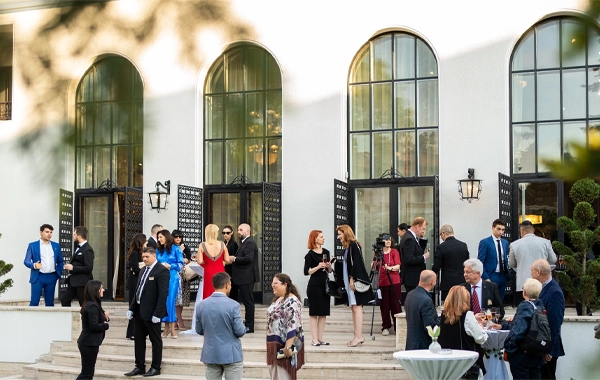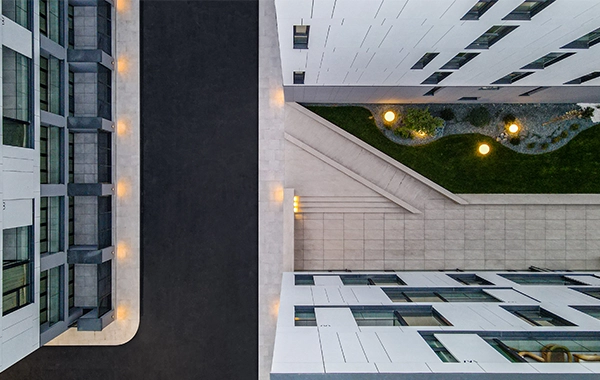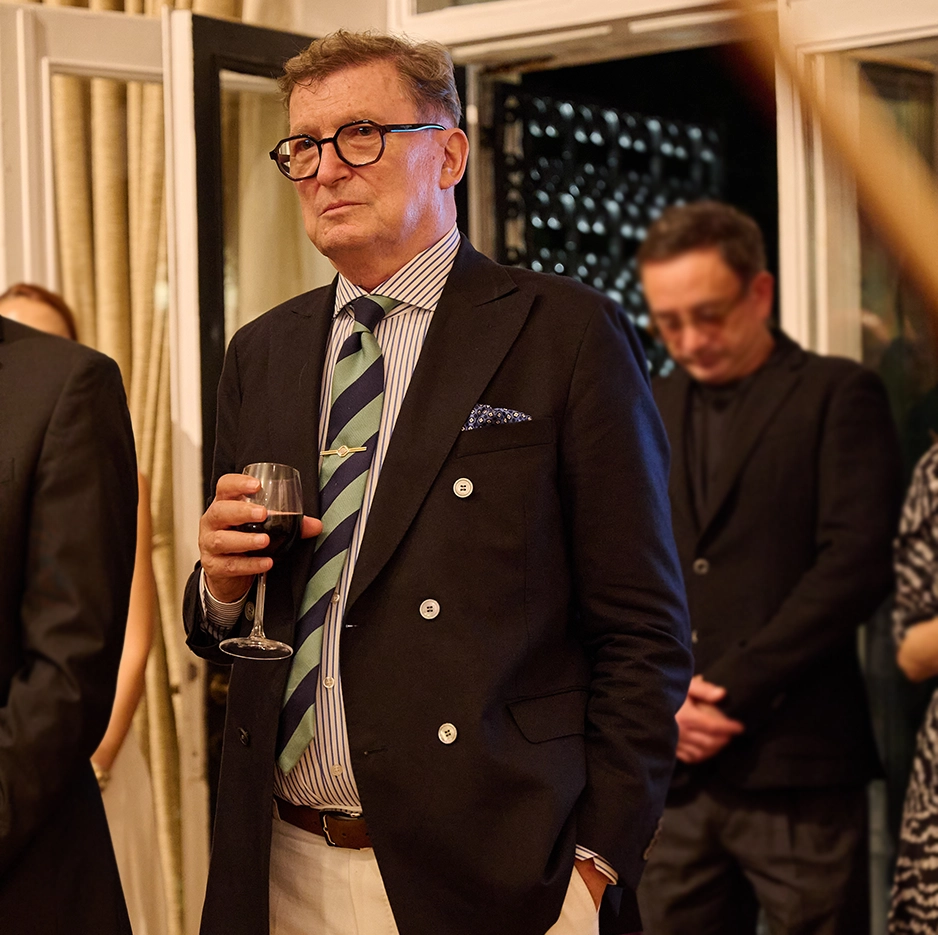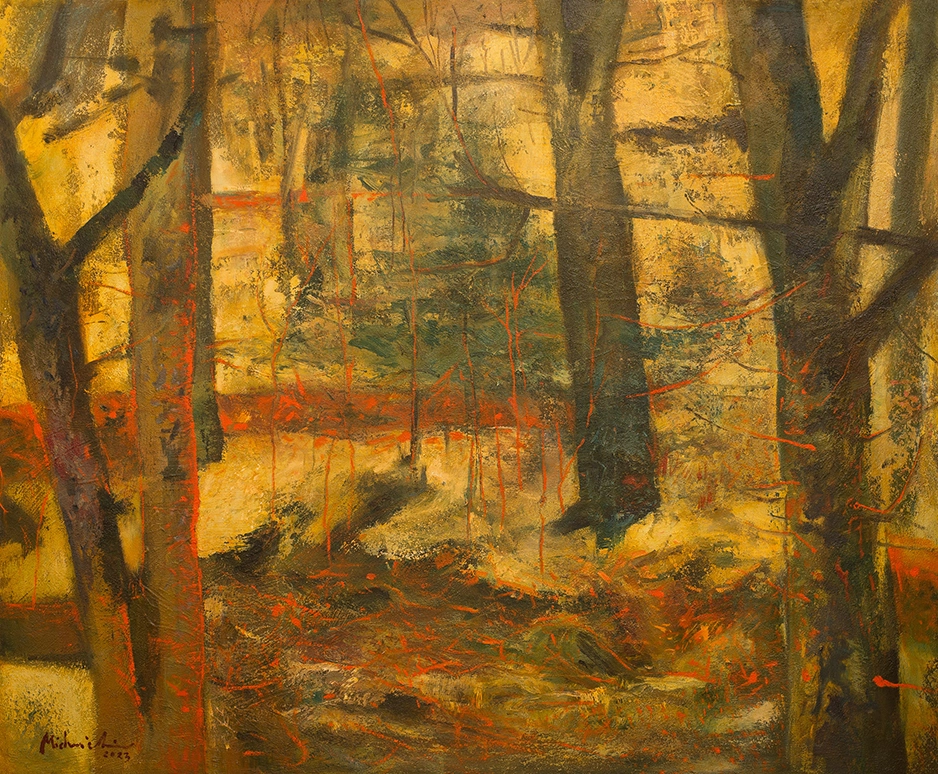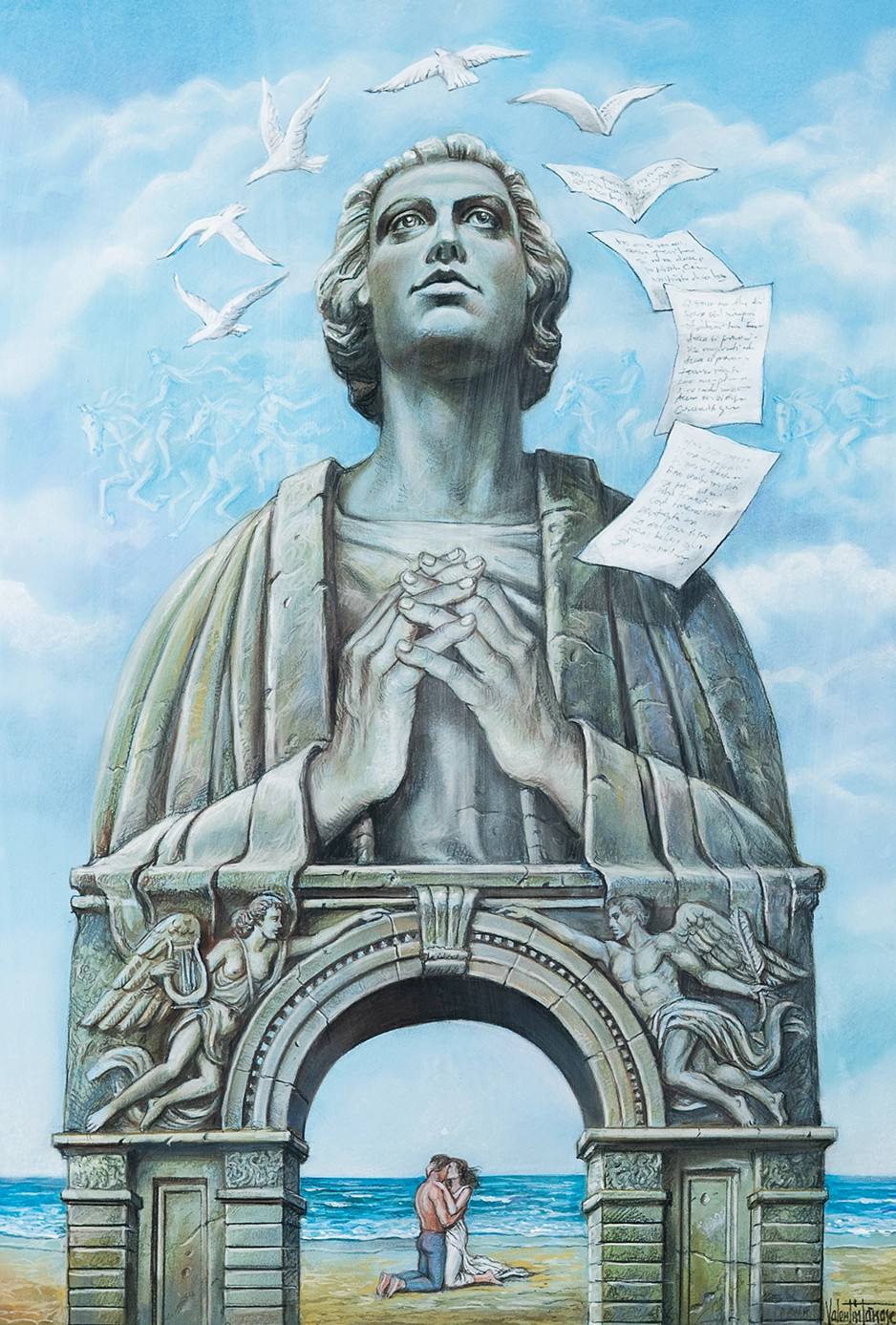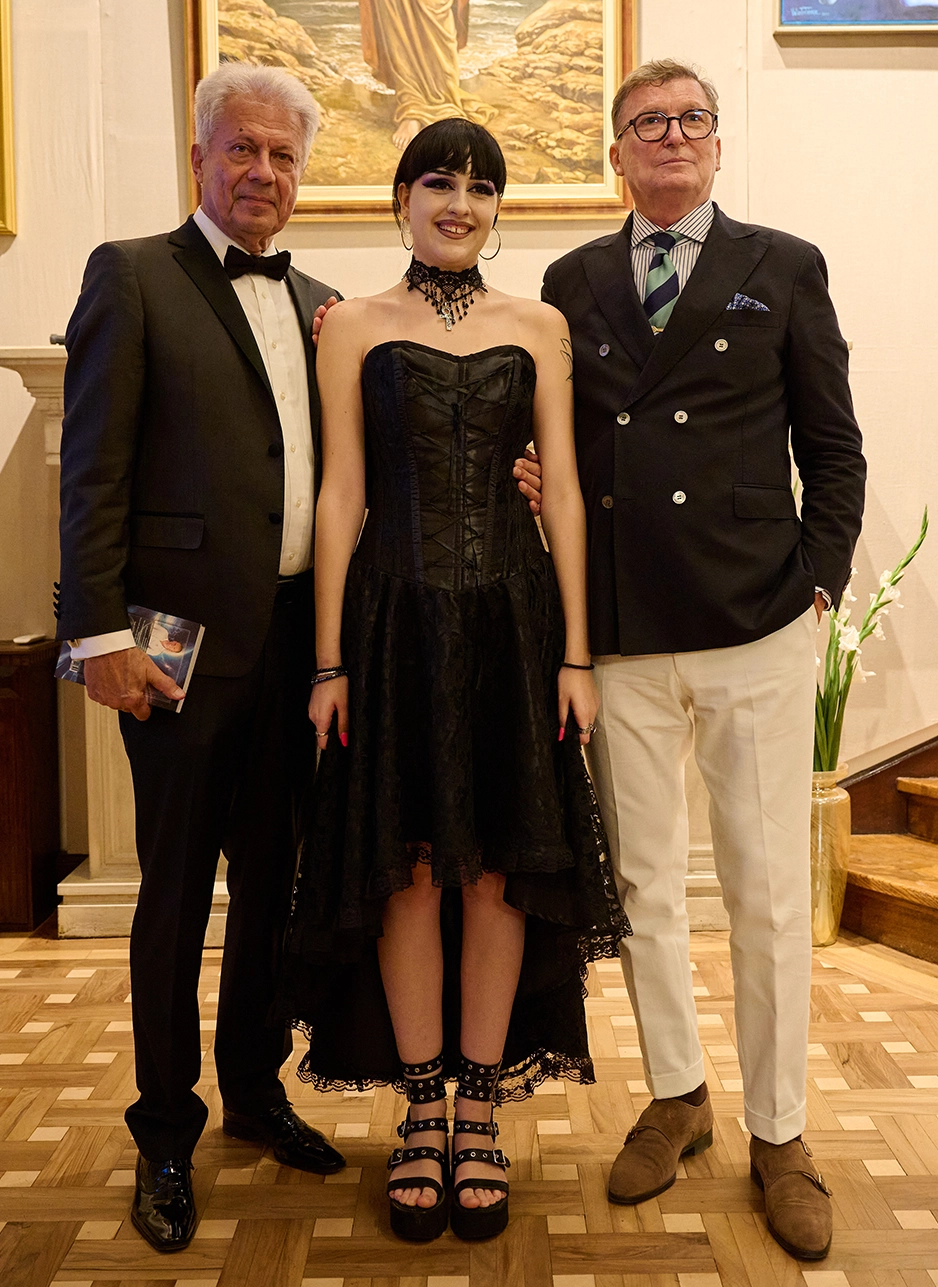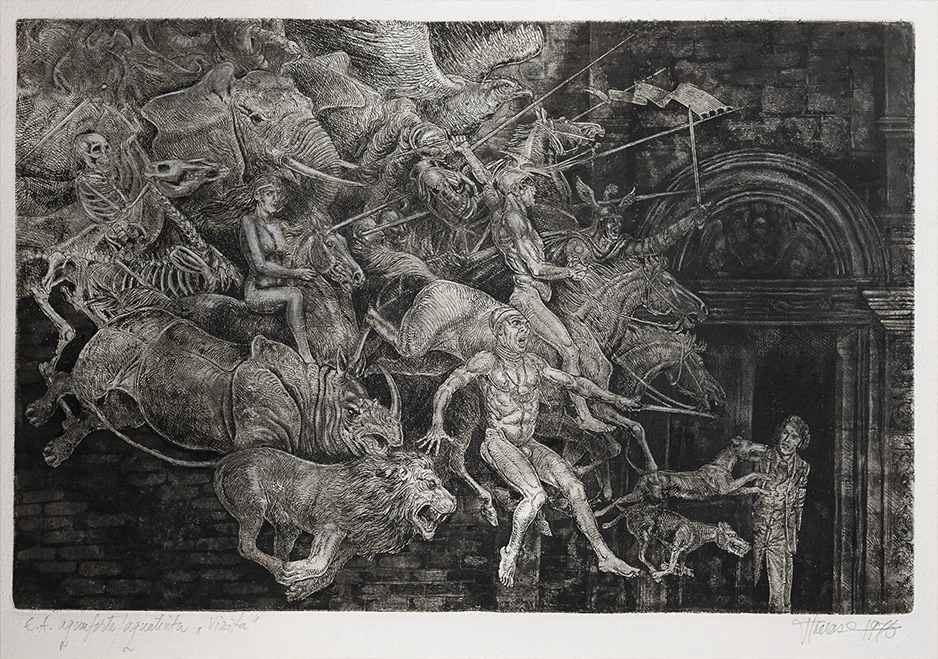WIN Gallery: Among the works you own, is there one you are particularly fond of?
Cornel Șurlea: Yes! It is "Madonna with Child" by Andrei Damo. He worked on it for more than a year, layer upon layer, in the Flemish style, close to Caravaggio. I put it in the most expensive Italian wooden frame. It emanates a special atmosphere, an extraordinary humanity. It is the work that, if I had to run somewhere with only one under my arm, I would take it without hesitation.
WIN Gallery: How do you manage to integrate art into your daily life, into the mundane?
Cornel Șurlea: From time to time, in the attic where I also have a small workshop, I take out some works from folders to air them out. I can no longer afford to buy others. I am a pensioner, I am of a certain age, and I've had some health issues. And, anyway, I think I have enough.
I don't have very expensive works, I don't have big names – and I know that well – but I believe I own many artistically valuable works. From time to time, I rearrange them: I change a frame, move a work from one place to another, bring it to an easel and display it for a few weeks. I walk past it, I talk to it.
The same with sculptures: I notice that Gogu Alifie [editor's note: the collector's new cat] also has certain tastes. He sleeps better next to some works, by the window, in the display cases where I have gathered many pieces. He also has preferences, favourites.
See, art is for everyone.
WIN Gallery: What experiences or encounters shaped your collecting method?
Cornel Șurlea: I remember that around '96, I went through a very difficult period. That's life: I suddenly found myself without money, without health, without anything. I used to walk around the city and stop at the Orizont art gallery, where I would look in the window.
It was a very successful gallery. The lady there organized small presentations, and the exhibited works seemed to give me strength, made me hope that I would recover, that things would get better and that it would be fine. I would stand for hours, "like a fool," looking at the window. At one point, the girls from the gallery drew the attention of the manager, who came to me and invited me in. I told her: "No, no... I just want to see these ones."
It had become a ritual for me. Every two or three days, I would go there, recharge myself, look at the works and tell myself: "When I recover and have money, I will buy this, this, and this." Among them was a painting – an Epiphany, done in a naive style, by a painter from Tulcea.
Slowly, I recovered. I started working again, and money began to come in. I would still drive past the gallery and look to see if the works were still there. Until the moment came for me to go and buy them.
But even on the way, I felt that something was not right. And indeed, when I entered, the painting was no longer there. Neither was the sculpture. Instead, there were a few other works – by Darie Dup and Reka Csapo Dup, as well as by Gheorghe Munteanu from Târgu Mureș – which I bought and still have now. However, I asked about the painting. The lady told me it had been bought by someone from a foreign company.
"No way," I replied. "That's my painting. Call him and tell him I'll give him double, triple, just to sell it to me!" But it couldn't be done.
I suffered immensely. It was the first failure of this kind, and since then, I tell everyone: what you like and can buy at that moment, do it. Not just in art, in any field. Because it might be a unique moment, and you will never encounter that chance again.
It was a painful experience that marked me... but also helped me.
WIN Gallery: How did you first discover Valentin Tănase's works?
Cornel Șurlea: Through a mutual friend who had an exhibition at the Military Circle, I think around 2009-2010. There I also saw works by Valentin Tănase, and I liked them a lot! So I remembered him from then. Later, we met when he did the cover of my catalogue The Golden Fish.
The story is very interesting. He had a work that I had seen, and on one occasion, at his home, over a glass of wine, I told him: "Valentin, this work, look, I'll take it, but make it, as if... in the lower part, draw a golden fish, so I can put it in the exhibition, to match the theme." And he, a man who I believe never refuses, said "fine" and did it, and the work also appeared on the album cover.
WIN Gallery: What attracts you most to Valentin Tănase's work?
Cornel Șurlea: The narrative ones with a surrealist touch.

